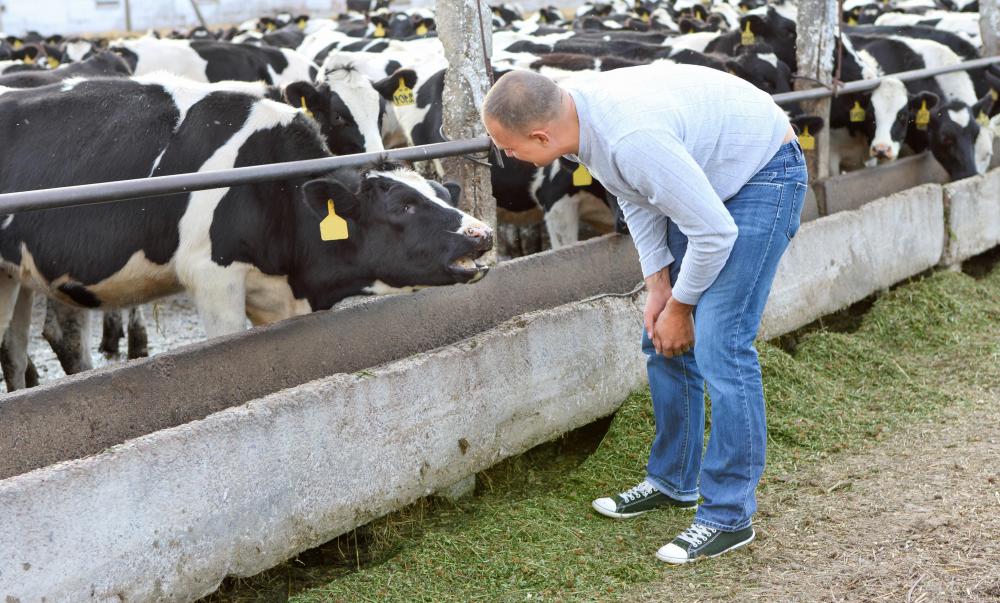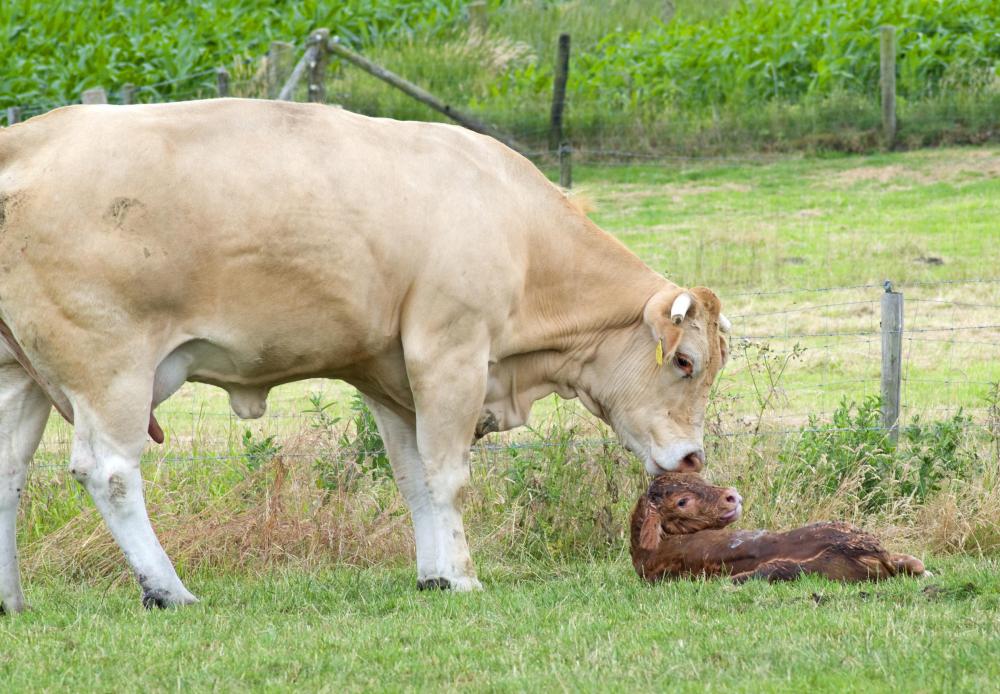At AllThingsNature, we're committed to delivering accurate, trustworthy information. Our expert-authored content is rigorously fact-checked and sourced from credible authorities. Discover how we uphold the highest standards in providing you with reliable knowledge.
What is a Heifer?
A heifer is a young cow, typically one that has not yet given birth to a calf. These cows are an important part of herd dynamics, since they represent replacements for older cows. In the dairy industry, they are desired, since they will eventually produce milk. In the meat industry, the gender of young cattle is not as important, since they are generally destined for slaughter in either case, although some heifers may be retained to produce more calves.
Cattle in general are widespread throughout the world, and a number of complicated terms are used to refer to cows in various life stages. A bullock, for example, is a young bull, and he may grow up to be a bull or ox, or he may be neutered to become a steer. Adult female cattle are often referred to as cows, and ranchers and farmers may have additional specific terms to define the animals that they work with. These terms can get a bit confusing outside the industry, and some cattle terminology requires rather graphic explanations.

The exact use of the term “heifer” varies. In some regions, the term is used to describe a cow who has not yet calved, up to the time of giving birth. One in the last weeks of pregnancy will sometimes be called a springing heifer. In other regions, a cow may be referred to by this term even through her first lactation, after which she is considered a fully adult cow. In some areas, the term “first calf heifer” is used to describe a cow that has produced a single calf.

The handling of young cattle varies, depending on the end destination of the animals. Cows are generally sexed at an early age across the cattle industry, with most bull calves being castrated so that they are easier to handle. Young female cows have potential economic value, since they can produce calves and milk. A dairy producer generally breeds heifers as quickly as possible to determine whether or not they produce adequate milk.

In regions of the world with programs that sponsor young farmers, such as 4-H or FFA, many people like to raise heifers as a project. A young cow is generally more amiable and easy to handle than a bullock. When she reaches full size, she may be auctioned off at a livestock auction, which can be an interesting learning experience, or the student may breed her to expand the scope of the project.
Frequently Asked Questions
What exactly is a heifer?

A heifer is a young female cow that has not yet given birth to a calf. Typically, heifers are raised for breeding purposes and are considered heifers until they have their first calf, at which point they become known as cows. The age at which a heifer gives birth for the first time can vary but is usually around two years old.
How long does a heifer remain classified as such?

A heifer remains classified as such until she gives birth to her first calf. This transition usually occurs when the heifer is about two years old, although it can vary depending on the breed and management practices. After calving, she is referred to as a cow, indicating her new status as a mother within the herd.
What is the difference between a heifer and a steer?
A heifer is a young female bovine that has not yet calved, while a steer is a castrated male bovine. Steers are typically raised for beef production due to their tendency to grow larger and have more muscle mass compared to heifers, which are often kept for breeding and milk production purposes.
At what age do heifers typically reach maturity?
Heifers typically reach sexual maturity between 6 to 12 months of age, but this can vary by breed and individual development. However, they are usually bred to have their first calf at around 15 months of age, so they calve by the time they are two years old, aligning with their physical maturity for safe birthing and lactation.
Can heifers produce milk before having a calf?
Heifers do not produce milk until they have given birth to their first calf. The process of calving triggers hormonal changes that initiate lactation. Therefore, a heifer's udder will remain undeveloped for milk production until she has experienced the physiological changes associated with pregnancy and childbirth.
How are heifers managed differently from cows on a farm?
Heifers are managed with a focus on growth and reproductive readiness, receiving a diet formulated for optimal development. They are closely monitored for signs of estrus for breeding at the appropriate age. Once they become cows, the management shifts to maintaining health for milk production, calving intervals, and overall longevity in the herd.
AS FEATURED ON:
AS FEATURED ON:















Discussion Comments
Well I think that cows are nice living animals and I don't think people should beat cows.
Different meat from different types of cow in various stages of life can vary in cost and demand. Veal is a more controversial form of expensive meat which is taken from young calves. Many Vegans object to the use of any animal products, and even the milk of Cows is seen as not within our right to consume. Cows produce many different nutrients and can be a very helpful measure of riches in agricultural societies.
Cows were and still are an important part of European society. Many words for money derive from words for cows (pecuniary) and many modern surnames have to do with raising cows (Buckley). If it were not for the symbiotic relationship held between many human groups and their livestock, it is likely that we would still be hunter-gatherers.
Post your comments